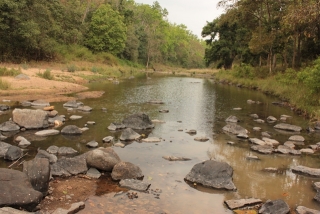Ecology and Environment
Workshop on Environmental Flows, Aaranyak and River Research Centre (Kerala), May 6, 2012, Guwahati
Posted on 06 May, 2012 12:31 AMOrganisers: Aaranyak and River Research Centre
Venue: Indian Institute of Bank Management,
Khanapara,
Guwahati

The state and fate of Himalayan glaciers - A paper published in the magazine Science
Posted on 05 May, 2012 06:21 PMThe paper argues that there is a poor understanding of the processes affecting the Himalayan glaciers in the context of the diversity of climatic conditions and the extremes of topographical relief within the region, making projections speculative, which can have a significant impact on the future of water resources in the area. It is thus important to have more information on the status of the glaciers in the Himalayan region.
The Supreme Court and its directions on Interlinking of Rivers (ILR): India and her people will be greatly benefited by its implementation
Posted on 03 May, 2012 07:03 PMAuthor : J. Prabudoss
Viability of Clean Development Mechanism (CDM) projects in India: Study of Chanju CDM project in Chamba district,Himachal Pradesh
Posted on 03 May, 2012 06:30 PMThe present paper is an attempt of the researcher to make a comparative analysis between the expected benefits received by the executing agency under CDM and the actual benefits people are expected to receive from Chanju-I Hydro Electric Project.
Importance of protecting and improving ecosystems for reducing disaster risk - A report by NIDM
Posted on 03 May, 2012 02:53 PMThe interception of ‘top-down’ and ‘bottom-up’ approach manifests conflicting situations in ground despite of visible synergies in top level policies. ‘Sustainability quest’ is the emerging concern in disaster management as a consequence of improved understanding of ‘disasters’ as environmental processes or rather as ‘environmental extremes’.
Climate-change adaptation in rural areas of India
Posted on 03 May, 2012 02:33 PMThe report suggests that -
Environmental knowledge for hydro-meteorological disaster management: Capacity development in disaster risk management
Posted on 03 May, 2012 02:27 PMPoor understanding of the environment – its structure, function, resources, especially at the level of planners and policy makers, have resulted in increasing frequency and intensity of hazards in nature. Understanding of the environment, its processes and resources are important for the early detection of hydro-meteorological hazards, prediction of disaster risk and scenarios and in evolving m
Workshop in Mumbai, India Against Corruption, SANDRP, on May 4, 2012, Mumbai
Posted on 01 May, 2012 09:26 AMOrganiser: India Against Corruption, South Asia Network on Dams, Rivers, & People (SANDRP)
Venue: Karnataka Sangh Hall,
Vishweshwaraya Smarak Mandir,
Moghul lane, Station Road,
Matunga West,
Mumbai -400016
Adaptive sustainable agriculture: Crop system intensification in Andhra Pradesh
Posted on 30 Apr, 2012 07:01 PMWOTR has been extensively promoting sustainable agriculture practices as part of its adaptive sustainable development approach. The objective is to promote low external inputs, increase land productivity, use of indigenous seeds, and reduce cost of cultivation.
The original Jungle Book: A visit to Kanha National Park, Madhya Pradesh
Posted on 28 Apr, 2012 12:37 AM

Kanha National Park, Madhya Pradesh




